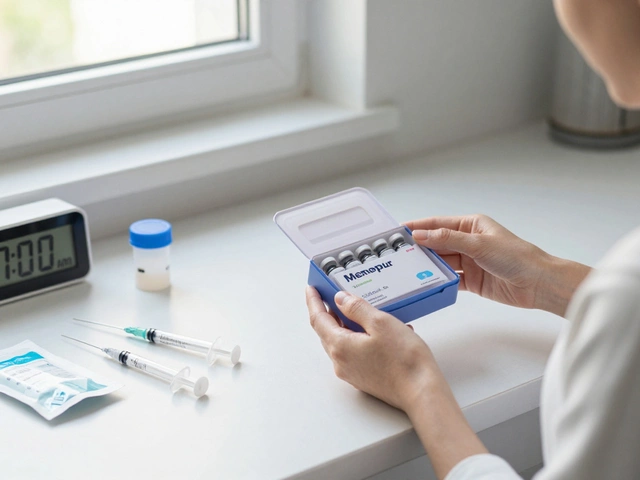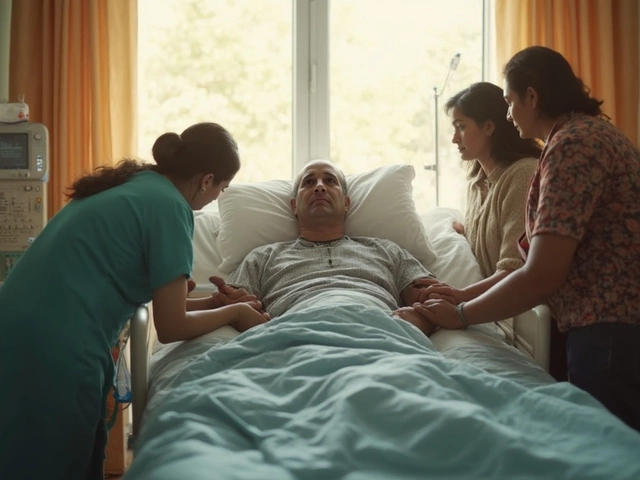Heart surgeries vary in complexity and risk. Some require exceptional skill due to the intricacies involved, such as heart transplants, coronary artery bypass grafting, and valve replacements. These surgeries demand a combination of expertise, precision, and sometimes innovative approaches. Understanding what makes them so challenging can provide insight into the advancements and dedication in the field of cardiac surgery.
Read MoreCardiac Procedures – What You Need to Know
If you or a loved one is facing a heart operation, the first thing you want is clear, plain‑language advice. You’re probably wondering which procedure fits your condition, how long you’ll stay in the hospital, and what the recovery looks like. This guide breaks down the basics, so you can feel a little less uneasy and a lot more prepared.
Common Cardiac Procedures Explained
Heart surgery isn’t a one‑size‑fits‑all thing. The most frequent procedures include coronary artery bypass grafting (CABG), valve repair or replacement, and minimally invasive interventions like angioplasty with stent placement. CABG reroutes blood around blocked arteries using grafts taken from other parts of your body. Valve work fixes leaky or tight valves, restoring smooth blood flow. Angioplasty, on the other hand, slides a tiny balloon into the clogged artery and inflates it to open the passage, often leaving a stent to keep it open.
Each option has its own risk profile and recovery timeline. For example, open‑heart surgery usually means a longer hospital stay and a few weeks of limited activity, while a stent can be placed through a small cut in the wrist or groin and often lets you go home the same day. Knowing which technique matches your diagnosis helps you set realistic expectations.
Recovery & Hospital Stay Tips
One of the most common questions is, “How long will I be in the hospital after heart surgery?” The answer varies, but average stays are about 5‑7 days for a CABG and 2‑3 days for a valve repair performed minimally invasively. Your length of stay depends on factors like age, overall health, and whether any complications arise.
During those days, focus on three things: pain control, mobility, and nutrition. Ask your care team about the best pain‑relief plan – many hospitals now use multimodal approaches that combine low‑dose opioids with non‑opioid meds to keep you comfortable without heavy sedation. Gentle walking as soon as the surgeon allows can speed up lung recovery and reduce clot risk. And don’t skip the protein‑rich meals; they supply the building blocks your body needs to heal.
After you leave the hospital, the real work begins at home. Follow the “Life After Heart Surgery” guide: keep your incision clean, take prescribed meds exactly as directed, and schedule cardiac rehab sessions if offered. Rehab isn’t optional – it’s a structured program that teaches you safe exercise, heart‑healthy eating, and stress‑management tricks. Most people notice a steady boost in energy after the first few weeks of rehab.
It’s also wise to track your progress. Simple tools like a daily log for pain levels, step count, and any side effects can help you spot problems early. If you notice worsening shortness of breath, swelling in the legs, or fever, call your doctor right away. Early intervention prevents small issues from turning into serious setbacks.
Finally, lean on your support network. Friends and family can handle groceries, reminders for medication, or just sit with you for a chat when the recovery feels lonely. Sharing your concerns aloud often eases anxiety and makes the whole process feel less overwhelming.
Cardiac procedures can be daunting, but with the right knowledge and a proactive plan, you can navigate the journey confidently. Use the tips above, stay in touch with your health team, and remember that each step forward—no matter how small—brings you closer to a healthier heart.





